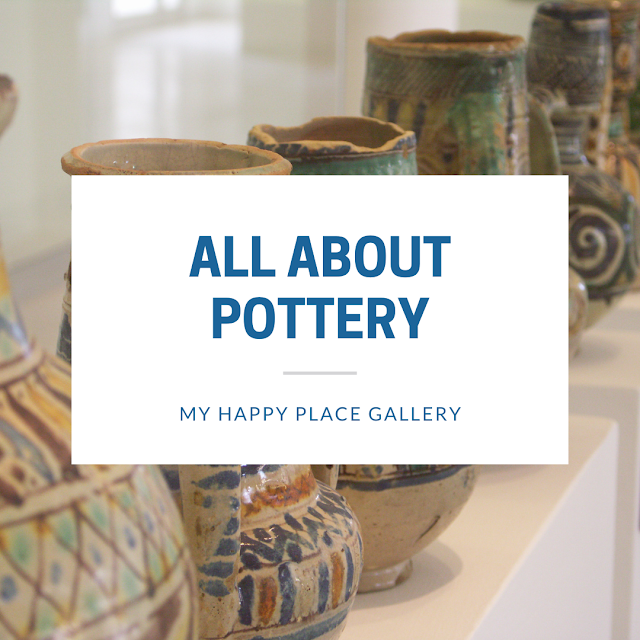All About Pottery
 |
| Add caption |
Pottery
is a common and widely appreciated art form. The ability to turn clay into a
masterfully crafted piece of art does not go unnoticed. We see beautifully made
and glazed vases, bowls, and dishes displayed in homes, stores, and anywhere
else we go. Although we use these handcrafted pieces for special occasions or
décor, pottery's first uses were for a much more practical use. Being one of
the oldest art forms, the practices and purposes of pottery have evolved since
its inception.
Dating
back to the Neolithic times, the oldest known works of pottery were created
over 10,000 years ago. As people began to shift away from hunting and gathering
and start farming, a growing need for an object that held water arose. With
clay being a readily available and abundant material, people started crafting
pots over a fire that would allow them to carry water.
Although
the origins of pottery trace back to Africa and the Middle East, the Greeks are
the ones who transformed the technique into an art form. Like before, the vases
and bowls made were used for practical purposes such as drinking and storing
wine and oil, but the Greeks decorated their pieces. Honoring Greek mythology,
the pottery created during this time paid homage to legends and gods with
intricate decorations. Additionally, the Greeks were the first to add color to
their creations by mixing clay with other materials to form different hues.
While
making their pieces, the Greeks created their pottery entirely by hand without
the help of a wheel. It wasn’t until around 3000 B.C., during the beginnings of
the Bronze Age, did the first development of a pottery wheel come into
existence. Potters designed a slow-moving platform which allowed the clay to be
spun while they worked. This device became known as the slow wheel.
A
century later, the slow wheel had transformed into what was called the fast
wheel. This device was almost identical to the slow wheel; however, this new
mechanism allowed the platform to spin on an axle. Potters would place their clay
on the wheel and spin or kick it. Like a modern pottery wheel, they would then
mold their shape out of the clay while it spun on the wheel. The advancement of
the wheel made it faster for potters to create pieces and easier to replicate
them. When electricity was invented a few millennials later, the modern pottery
wheel we know today was constructed.
Perhaps
the biggest evolution of pottery was developed in 600 A.D. with the beginnings
of porcelain. What we now call “fine china” began during the Han Dynasty in
China. These elaborate pieces were crafted with white clay rather than
traditional red clay, which gave them their polished look and color. Potters
mixed granite with the clay and then fired their pieces at very high
temperatures. The delicacy and expense of porcelain made them difficult to
ship. For this reason, potters from other parts of the world began to curate
glazes that replicated the ornamental appearance of porcelain.
From
decorative bowls to vases for wine, pottery is one of the most versatile and
functional art styles! Since its inception, the uses of pottery have grown
overtime as well as its techniques. We hope this blog taught you something new
and gave you a new appreciation for this wonderful art form! We invite you to
browse out online gallery, and as always come by to see our art in-person.


Comments
Post a Comment